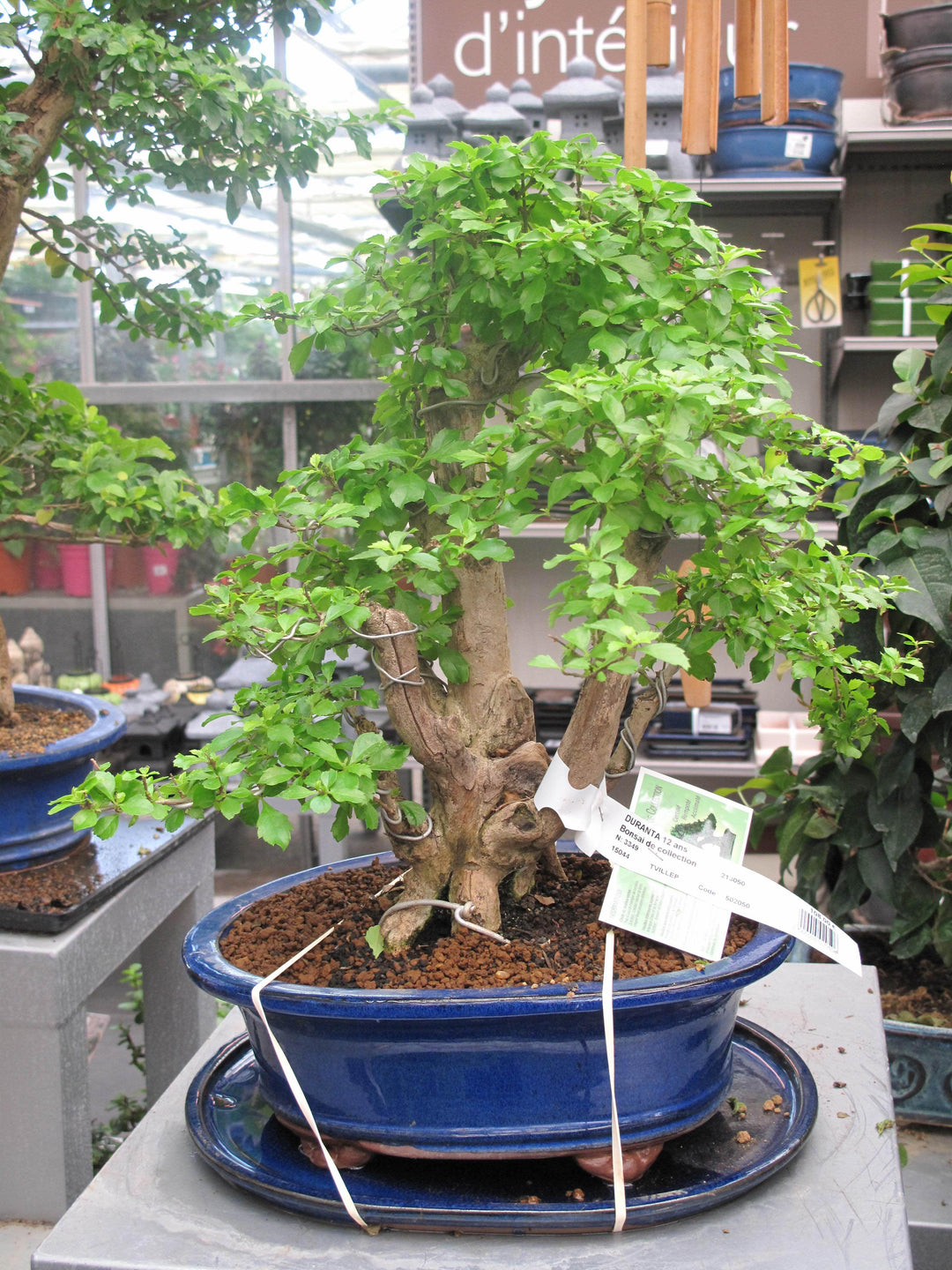
What To Look For When Shopping For A Bonsai Tree
When shopping for a bonsai tree, you’re looking for a tree that is:
- Healthy
- Pretty
- Not a ripoff
Health is obviously the top priority. You don’t want to buy a tree just to watch it die in a few weeks…
Then comes aesthetics. Do you think it looks good, or do you think you can make it look good? I would hope the answer is a clear “yes” or you wouldn’t be thinking of purchasing it in the first place.
Once those two basics are covered, you have to look at the “ripoff” part.
To cover that, we’ll split your potential bonsai purchase into three categories.
1. Nursery Stock
Nursery stock can be great. It’s just a new tree from a nursery. Nothing special, nothing “bonsai” about it until you get your hands on it.
You’ll pay normal nursery price and hopefully get some really good stock (if you have a quality nursery, that is.)
Generally you get a great deal here because you have to do 100% of the work to turn it into a bonsai. If you’ve got the skill, this can be a great bit of fun.
2. Pre-bonsai Tree
A pre-bonsai tree is effectively nursery stock that someone prepped for bonsai for you.
Ideally, the roots are pruned to fit into a bonsai pot, and the tree is pruned to showcase one or two potential bonsai designs. If it doesn’t have those two features, I’d skip it…
A bonus could be that it’s actually been completely pruned and trimmed for you into a great style, and the only things left for you to do are to pot it and wire into a final shape.
Either way, you’re effectively paying for nursery stock with a labor premium added to it.
This is totally reasonable, since the artist had to buy the nursery stock and put their time and effort into preparing the pre-bonsai for you. Expect to pay more, but definitely not full bonsai prices.
Before you buy, make sure that rule number 1 is still in tact: The tree must be healthy.
It just had its roots and some major branches pruned. Make sure it’s a few weeks old before you buy it to see if it’s languishing or thriving.
3. Bonsai Tree
Now we’re stepping up to the prime time and buying an artisan created tree.
For a true bonsai tree, I really don’t consider anything a ripoff if you’re buying from a true bonsai master or a real bonsai nursery.
Yes, they will cost more money than nursery stock and pre-bonsai stock.
But you’re buying living art, so that’s ok. As long as you love it, who cares what you’re spending? If you can, and you want to, go for it.
But it must be a quality tree.
If you’re buying a bonsai tree at a fair, or a mall kiosk, or a less than reputable place that doesn’t seem to know much about bonsai trees, be cautious.
Look at the soil. Is it dirt, or is it actual bonsai soil?
That’s my telltale sign for quality. So easy to check, and impossible to hide.
If it’s actual bonsai soil, you’re probably looking at a great tree and don’t have to worry about much else. You’re free to relax and go buy a tree.
If its dirt or top soil with some big clunky rocks on top, you’re effectively buying a tree on death row.
Yes, you can still buy it (if the price reflects what it truly is…) and revive it.
I’ve done this before. It’s just work.
You’ll need to repot it, root prune it, and nurse it back to life.
(Funny side note — Many junipers from places like this are already dead when you buy them. They can retain their color after they die for a bit, so you might actually be buying a dead tree. Make sure it’s alive before you buy!)
If you’re going to DIY, you’re going to want to stick with nursery stock or a pre-bonsai tree. If you find a tree you like, there’s not much to check on there besides the health of the plant.
But if you want the bonsai experience without the work, make sure you’re buying from someone that actually knows how to create a bonsai tree and you’ll have a tree that will thrive for years upon years upon years.
Do you want to read more bonsai content like this?
Enter your info below to get fresh bonsai tips, tricks, photo collections and exclusive subscriber-only content delivered to your inbox every now and again.



Leave a comment